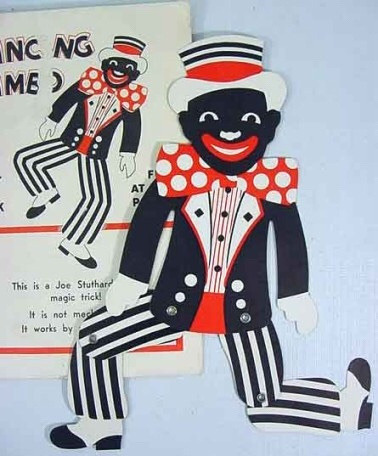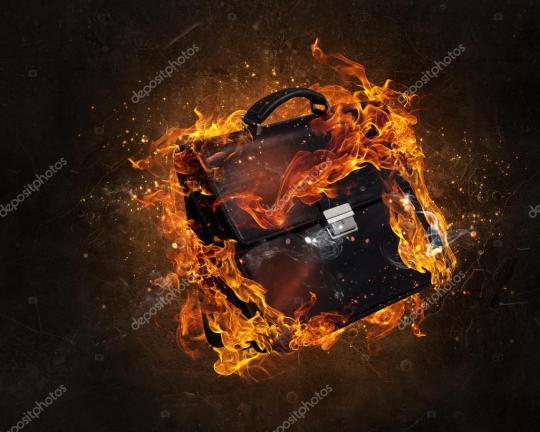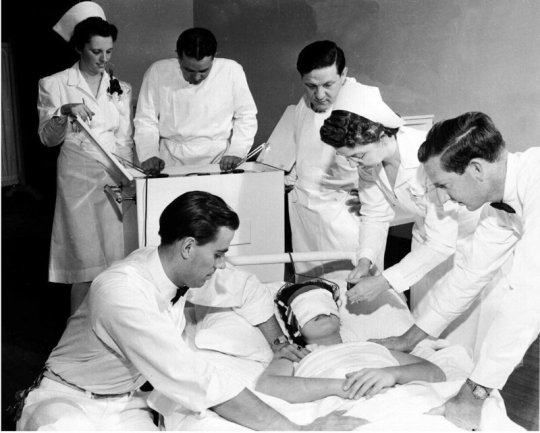Text
Brother Tarp’s Leg Chain
In Invisible Man, Ralph Ellison emphasizes the possibility for freedom from oppression through the crucial symbol of Brother Tarp’s Leg Chain. Concerned about the intentions and perceptions of the other members of the Brotherhood due to the anonymous letter, the narrator seeks assurance and consultancy from Brother Tarp, a fellow Black member of the Brotherhood. During their conversation, Brother Tarp reveals to the narrator that he was chained for “‘Nineteen years, six months and two days”’ because he said “‘no to a man who wanted to take something from [him]”’(Ellison 318). The confession from Brother Tarp ties back to the words of the narrator’s grandfather. As a part of his last words, his grandfather had advised the narrator to “overcome ‘em with yeses” (Ellison 14) while referencing the white men. Brother Tarp’s disclosure about being chained for simply saying “no” highlights the significance of the grandfather’s words. Saying “yes” was not simply a method of appeasing the white men, but it was rather a method of saving yourself from the destruction of life and pain. Still, the narrator solely experienced the loss of identity by showing acceptance to the orders of the white men around him. Brother Tarp’s revelation sheds light on the severity of punishment Black men faced for a simple act of defiance. Racism and oppression perpetuated these punishments because it became a crime to even say something as simple as “no” to a white man. Finally, Brother Tarp explains that he was able to escape by breaking the chain and leaving. The action of breaking the chain is symbolic for Black men that defied societal expectations and refused to accept their fate as being inferior to white men. By breaking the chain, Brother Tarp was breaking his cycle of oppression that had continued for nineteen years. Brother Tarp passing his broken chain to the narrator is his hope that the narrator also learns to seek for freedom and break free from his subservient role. In the process of catering to the needs and desires of the Brotherhood, the narrator was losing his identity. The broken leg chain link is symbolic of his possibility to obtain freedom and regain control of his identity. Receiving this chain link takes the narrator back to the link he saw on Dr. Bledsoe’s desk. This parallelism between the links in the novel is significant because it portrays two contrasting symbols. Whereas Dr. Bledsoe’s link was smooth and seemingly untouched, Brother Tarp’s “bore the marks of haste and violence” (Ellison 319). Dr. Bledsoe’s shackle is superficial as he has no past experiences to display his struggle and fight against oppression. In fact, he continues to preach the ideas of acceptance and serving the white men. This mimics the Brotherhood because they put on a facade that they know the realities of the Black experience when they never faced the true oppression. On the other hand, the twisted, rusted nature of Brother Tarp’s link symbolizes his twisted past and the real cruelty he was subjected to. Thus, his link symbolizes the potential to break free and hope to seek freedom from the oppression that racism brings.

More info on chain gangs:
https://www.pbs.org/tpt/slavery-by-another-name/themes/chain-gangs/
youtube
-Saanvikha Saravanan
0 notes
Text
Bird Droppings
The bird droppings in Invisible Man symbolize white influence on black history as well as their success of manipulation of black people. When the narrator is trying to reach Harlem after getting rid of Sybil, he comes upon a flight of birds and the birds drop their feces on him. This scene reminds the readers of an earlier scene in which bird droppings like "liquid chalk" run down the statue of the Founder. Believing that his ideology and work have lifted up the black race, the Founder fails to recognize that he is just blindly following the expectations whites have on blacks. Thus, the bird droppings tarnish the pristine image of the Founder, showing that he has been stained by whites. Much like the Founder, the narrator has been used as a means for advancement for the Brotherhood while all along believing that he's helping the black community.
One example of this is in chapter 24 when the narrator is walking under a bridge which is splattered with bird droppings. This is similar to the scene where the narrator is watching the mockingbird on his college campus and he saw it soil the statute. This symbolizes the stain that was left on black culture and their history, and the manipulation and expectations they had to endure. The narrator finally realizes that he actually has no identity and power at all after his encounter with Sybil. Immediately afterwards, he got covered with bird droppings. Without realizing the truth, both the narrator and the Found have been used as tools to spread false white ideologies. As such, bird droppings represent the white stain on black history.


-Manas Palaparti
0 notes
Text
Dancing Dolls
In the novel, Invisible Man, Ellison pays special attention to the segregation of African Americans, and their perceived nature and roles in American society. A particular symbol used to show this perspective is the introduction of a Dancing Sambo Doll. It is shown to be in the middle of a crowd, and is made of paper and cardboard. When the user pushes it down, the doll dances, in what the narrator describes as being in a “sensuous” way. The doll then voices an exaggerated sales pitch, promising happiness. The narrator’s reaction to the doll’s dancing is particularly visceral, and he describes being in a state of both entrancement and disgust. It is representative of the indignation and humiliation African-Americans have suffered.
Furthermore, the doll represents a society in which African-Americans are forced to be weak, subservient, and provide perverse entertainment for white Americans. In American society, African-Americans are perceived to be no more than dolls, playthings, and puppets for white Americans, for the purposes of manipulation and entertainment. As always, this power structure often comes at the expense of African-Americans.
The doll in particular shows overt movements meant to show black rhythm and culture in a negative and ridiculing light. All of these actions represent the current position in American society that African-Americans have to experience.

Link to video about Sambo:
https://blackamericaweb.com/2017/01/11/little-known-black-history-fact-sambo/
-Joshua Y
0 notes
Text
Frederick Douglass Poster
As the Invisible Man is a novel surrounding the situations of African Americans suffering from events such as segregation and discrimination, symbols are usually brought into the environment to enrich the understanding of not only the history, but how the theme of oppression was common amongst black people, and how they fought against it. One such symbol was the poster of Fredrick Douglass. Douglass was known as a major African American abolitionist who worked alongside President Lincoln in many ways to bring freedom to slaves living in the South. Brother Tarp gifts this poster of Fredrick Douglass to the narrator to show his faith and that he believes the narrator has potential to become a sort of “new Fredrick Douglass”. As an abolitionist Fredrick Douglass was renowned for his ability to speak and able to convince others to support his argument. This symbolizes how the poster is a faithful belief that there is hope and that a figure can rise up against the oppression and discrimination that blacks were suffering from. As Fredrick Douglass was a significant figure in the abolitionist movement, the poster is a representation of Brother Tarp’s faith in the narrator to essentially “free” African Americans from the strife they are going through.
https://www.britannica.com/biography/Frederick-Douglass
More about Frederick Douglass
-Alvin Vasanthakumar
0 notes
Text
Burning the Contents of His Briefcase
In the novel Invisible Man by Robert Ellison is meant to symbolize the moving forward of his future, and the renewal of his identity as a whole. By the end of the novel, the contents of the briefcase, and the briefcase entirely are burned and set aflame. The burning of the contents within is meant to symbolize the paving of the path, ‘lighting’ the way to his future. These items are significant in itself as the first thing to be burned is the highschool diploma. This diploma originally replicated a sense of pride and identity and the core of his identity. However, as he burns the diploma within, the sudden light from the fire represents the narrator of the novel, delving into a depression-like darkness. Sinking into the inky black void that is a lack of identity.
When the protagonist of the novel burns the items, he is later approached by two police officers who question “What’s in that briefcase?” (Ellison 465). To which the narrator responded simply with “You.” This response showcased that the briefcase truly was a manifestation of the narrator’s identity, his past identity. But the burned remnants allow him to see a new, better self. With every item he burns in this seemingly never ending fire, our narrator is burning a piece of himself away until it is all gone, and therefore leaving himself Invisible. The burning of the briefcase is symbolic as it represents him moving towards a newer and better future for himself.
All along, the irony of the briefcase was that it was not only figuratively, but literally baggage. This supposed briefcase was given to IM (narrator/Invisible Man) during a troubling and demoralizing fight that he faced before, and throughout the novel. Now that he has burned the briefcase, he still likely has baggage (potentially represented by the fact he likely has other suitcases or bags) but, this particular briefcase that carried, supposedly the most, has now been burned and destroyed.
The burning briefcase itself :

The briefcase:

-Nitya Chiru
0 notes
Text
Brother Jack’s Glass Eye
From our first encounter with Brother Jack, he is portrayed as a saving grace for our narrator. IM has been deemed useful to the brotherhood and supposedly full of potential. Jack is able to enthuse IM with a purpose of rallying his brothers against prejudice, judgement, and mistreatment. However, Ellison later reveals the true intentions of the brotherhood and their history oriented views and macro-lens perspective of change. In two of my favorite quotes of the novel Jack states,
“the committee does the thinking. For all of us. And you were hired to talk… we do not shape our policies to the mistaken and infantile notions of the man in the street. Our job is not to ask them what they think but to tell them.”

IM was only ever meant to be used as a puppet for the brotherhood's ends.
During this heated debate Brother Jack’s glass eye pops out of his head in a blur, startling and unnerving the unaware IM. Following this moment of realization our narrator discusses the theme of blindness. Jack continues to rave about his sacrifice and discipline while smugly addressing IM’s silence.
In an almost too perfect summation of the scene, Ellison is able to attribute Brother Jack’s blindness both literally and figuratively through his inability to see what is right and wrong in the brotherhood. His glass eye represents his vehement resistance to change and all things new. The individuals and politics upon which Harlem stands are not seen by Jack, and his arrogant, condescending, power hungry rhetoric only cements that.

-Andrew Hampton
0 notes
Text
Briefcase & Its Contents
Ralph Ellison uses the briefcase to represent accomplishment and societal status throughout Invisible Man. In chapter 25 the invisible man burns the contents of his briefcase in a state of metaphorical outrage, which includes his high school diploma, the sambo doll, the anonymous letter, and the paper with IM’s brotherhood name on it. The briefcase is a symbolic object through all of Invisible Man, so in chapter 25 it comes to represent IM’s newly formed identity, which was not shaped by himself but society. The burning of the briefcase contents is how IM sheds his final layer of illusory identity. In this scene he is so overcome with truth that he no longer places any value in the contents of his briefcase. However now IM recognizes the falseness of his diploma, and all other signifiers of status. When IM first is given his briefcase, it serves as a sort of basis for his new identity, which he fills with different ideals people have for him. In destroying the briefcase, IM is releasing all of the roles he filled, such as the role of a Brother. Through burning the paper with his brotherhood name on it, he is cleansing himself of that false persona and can begin building a persona that is true to IM as an individual. It is only through destroying this old identity that IM is able to fully become his most authentic self.
youtube
Burning paper is a common spiritual practice, used to release past expectations and emotional baggage. It is a heavily symbolic ritual, which is talked about in this YouTube video

This scene in chapter 25 takes place in the sewer, pictured here
-Annabel McGannon
0 notes
Text
Shock Therapy
Ralph Ellison highlights the rebirth of the narrator through the prominent symbol of the shock therapy. In the hospital scene, IM had a “pulse of current smashing through [his] body” (Ellison 195). The protagonist gets this shock treatment in Chapter 11 of the novel after he finds himself in the factory hospital. The doctors arguing over the chosen treatment proves the racism present in society as one physician comments that this form of treatment from “primitive instances” would not be as effective in advanced conditions, further suggesting that shock therapy would not be considered on a “New Englander with a Harvard background” (Ellison 194). Thus, the doctors attempt to “cure” IM of his unnamed illness that would not have been used on a white male. This symbolizes the inhumane punishments and derogatory slurs used towards black men that would not ever be directed at a white man. Prior to the shock treatment, IM was fueled by anger at his claustrophobia, discomfort, and lack of understanding but after the treatment, he was exhausted. This resembles how Black Americans were initially enraged about the situation and hatred they were subjected too, but seeing that their efforts to resist were pointless, they became exhausted and accustomed to society’s hierarchy. The shock therapy is literally a pivotal moment in the novel as his “limbs seemed amputated,” but symbolically it represents his rebirth. When the doctor asks about “Buckeye Rabbit” and “Brer Rabbit,” the protagonist realizes the aspect from his childhood and a segment of his identity that he had forgotten and was neglecting. Until this point of the novel, he had been running towards his dream of an education opportunity, and he remained almost devotional to the trustees and powerful individuals like Dr. Bledsoe. However, the shock therapy symbolizes his rebirth where he moves towards embracing his Black identity while overcoming his fear of the prominent white figures in his life. The shock therapy meant to weaken the narrator has ultimately given him this newfound strength.
The electrical shocks also tie back to the beginning of the novel during the Battle Royale when the narrator and his companions were subjected to the shocks while they scoured for the money. Thus, electricity as a whole represents the tortures Black Americans faced in society under the force of white men.

https://www.ncbi.nlm.nih.gov/pmc/articles/PMC3442372/
This link discusses the racial disparities with electroconvulsive therapy (ECT). Racism existed considerably within medicine.
https://news.virginia.edu/content/uva-and-history-race-eugenics-racial-integrity-act-health-disparities
In this chapter, Ellison also dives into eugenics and its presence in a racist society. This link provides more insight into eugenics and racism in medicine.
-Saanvikha Saravanan
0 notes
Text
Sambo Doll
The Sambo Doll is very similar to the Coin Bank which was mentioned in Chapter 15. The Sambo doll is made in the image of the Sambo slave, who, according to white stereotype, acts lazy yet obsequious. Moreover, as a dancing doll, it represents the negative stereotype of the black entertainer who laughs and sings for whites. While the coin bank illustrates the power of stereotype to follow a person in his or her every movement, the Sambo doll illustrates the stereotype's power to control a person’s movements altogether. Stereotype and prejudice, like the invisible strings by which the doll is made to move, often determine and manipulate the range of action of which a person is capable. In Chapter 15 the narrator comes across Clifton who is controlling a Sambo Doll like a puppet by making it dance and sing. The narrator describes this as a cheap version of showing African Americans through the stereotype that they are like toys. This is viewed as extremely negative as the connotation is derogatory and when Clifton was shot and killed by the police the narrator takes the doll and burns it for light while he is hiding underground. At first the stereotype of the doll is shown as the typical black street performer who sings and dances but the strings are significant because they symbolize the way the doll is manipulated into performing the way they want for white people. The stereotype that surrounds this doll can be controlled by outside forces for the purpose of entertainment and pushes racism into the picture which is not only negatively shown but also very degrading to them. Clifton is trying to convey the idea that the Brotherhood is only motivated by self-interest and that the members are manipulated like a Sambo doll. This idea can also be generalized to the black population as a whole. Blacks are just like dancing Sambo dolls. They are controlled by the white easily with a string. They are there to impress and entertain the whites. The Sambo Doll is a powerful representation of whites being able to control black people’s lives and shows the racism that was very prevalent in America. The destruction of this doll shows the power it had over these individuals and the social pressures they faced being a minority.

-Manasvini Palaparti
0 notes
Text
Woman & The Apple
In Chapter 11 of the novel Invisible Man by Ralph Ellison, the narrator, after being released from Liberty Paint hospital, goes into the subway, with the train leaving for Harlem, and notices a young, “platinum blond” woman eating a Red Delicious apple. Apples are commonly used to depict immorality in many forms, due to the Adam and Eve story. In the novel, the apple particularly represents ignorance (such as in the form of a “hard red apple stamped out of tin”, representative of Trueblood’s ignorant character in an earlier section of the novel), but in this chapter, it represents knowledge and together with the woman, sexuality. In this particular moment, the narrator shows an interest in sex; however, more interestingly, the object of his interest is a white woman, which any action towards is obviously forbidden by society. The woman is shown to be eating the “forbidden fruit”, or knowledge. This represents that with people learning more and creating new ideas to replace old ones, the knowledge of the times are changing. The preconceived ideas and notions held in this era will change soon for the topics of sexuality and race, and how those topics intermingle with each other will also change. The fact that the author specifically mentioned the female’s “platinum” hair, representing modern times and colors, reinforces the idea of a changing society.
https://www.metmuseum.org/art/collection/search/336222
This is an etching by Durer, depicting Adam and Eve, and the Fruit of Knowledge.
youtube
This is a video discussing the roles of white purity and black sexuality, and how they play into the fabric of America’s racism.
-Joshua Y
0 notes
Text
Coin Bank
In chapter 15 of the novel Invisible Man by Ralph Ellison, in a fit of anger and distress, the narrator, slams a metal pipe up against a coin bank, shattering it. While the coin bank made its first appearance in Mary Rambo’s house, its significance as a symbol truly came to life upon IM breaking it. From the get go, IM is very offended by the racist representation that the coin bank appears to set. From the description provided by the novel, the coin bank represents a black figure, thrilled to eat away at any spare change a white man is willing to give it. Of course the bank is meant to represent the awful perceptions of the black community set up by the white community, through toys, coin banks, and common household items.
The true symbolism, as mentioned earlier, comes into play when the narrator smashes the coin bank, -this meaning he is trying to destroy the stigma around african americans- however, just like in the real world, the task is not so easy. The narrator tries and tries to get rid of the pieces, dumping it, but inevitably, he hides the broken glass inside his briefcase, carrying it with him for presumably the rest of the story. This represents that no matter how hard African Americans try to fight the racism and the false realities set up meant to ‘represent’ them, they will always be forced to carry those perceptions around or on them. Similar to the broken glass our narrator can not get rid of, and now has to carry with him for eternity. Here, the coin bank represents the difficulty and struggle to abandon the legacies and stereotypes set for the black community, leaving all black men, to now be forced to carry this burden with them.

youtube
- Nitya Chiru
0 notes
Text
Baked Yams
In chapter 15, Ralph Ellison uses the baked yam as a symbol of IM’s heritage. By eating the baked yam in the public streets for anyone to see, IM is forced to come to terms with his roots. This scene is a pivotal point in the novel, where IM decides to form his own identity. After his first bite into the yam, IM has a rush of emotional nostalgia and homesickness. He feels free as he has finally reached a place in his journey of self discovery where he is not ashamed of his culture. IM at the beginning of the novel, before coming to Harlem, would have never indulged in a baked yam publicly. The sweetness of the yam makes it crystal clear for IM just how idiotic his aversion to his own culture is. He reflects upon this in saying, “What a group of people we were, I thought. Why, you could cause us the greatest humiliation simply by confronting us with something we liked” (Ellison 264). At this point in the novel, IM is realizing that he can forge a path for himself without renouncing his culture and racial identity. He is able to think for himself and no longer needs to act proper just to gain the approval of white men. It is here that IM truly is disgusted by Bledsoe, who he now views as a phony rather than idolizing him. IM then launches into a fantasy of exposing Bledsoe for liking baked yams, further solidifying the yam as a symbol of southern black culture. Defiantly IM states, “… to hell with being ashamed of what you liked. No more of that for me. I am what I am!” (Ellison 266). IM is beginning to heal his deep-rooted shame and is able to accept himself as black without the desire to conform to white culture. Rather than trying to change himself and run as far from his blackness as possible, IM is willing to embrace his identity. This is also a pivotal point in the novel because after this scene, IM begins being heard. When he gives his speech at the eviction, IM is very visible and his voice is heard. So much so that he is recruited for his rhetorical skills.
youtube
The yam is such a powerful symbol of heritage because food is highly personal and associated with family and memory. Historian and chef Michael Twitty cooks meals the way slaves made their food, bringing visitors face to face with America’s past.
youtube
Taste is a very powerful sense, which can trigger intense memories and emotions. Often tasting a food associated with a particular occasion will bring flashbacks and heavy nostalgia. This video explains the psychology behind food nostalgia.
-Annabel McGannon
0 notes
Text
Eviction and Free Papers
In chapter 13 of Invisible Man, Ralph Ellison laments on the ideas of freedom and dispossession as he witnesses an elderly couple’s belongings get strewn into the snow. Among the items, he finds freedom papers. The papers belong to the elderly man, we find out is called brother Provo. The scene is experienced similar to an out of body experience as he gazes at the faces of those in the crowd and the various nick nacks of the old couple. Before IM’s impromptu and ultimately unsuccessful speech he thinks to himself, “ I turned and stared again at the jumble, no longer looking at what was before my eyes, but inwardly-outwardly… And it was as though I myself was being dispossessed of some painful yet precious thing which I could not bear to lose.” Chapter 13’s theme continues to cover the base of dispossession as IM speaks to the crowd about who is really being dispossessed. Brother Provo as a slave had experienced this deprivation of freedom, property, and possessions, and now again the white man has come to evict them from their very own apartment, which he refuses to let them re-enter to say their final prayers. Dispossession by definition is to, deprive (someone) of land, property, or other possessions. In the end, the chapter powerfully considers the ideas of what freedom has become for African Americans in America while also displaying the unity of blacks and their shared experiences.

youtube
This is an incredibly interesting video of ‘How Black Americans were Robbed of their Land’ in the 20th century.
-Andrew Hampton
0 notes
Text
Paint Cans
Ralph Ellison is able to portray the split that is present in American society in regards to race with the use of specific symbols in the novel Invisible Man. The paint cans are exemplified by the Liberty Paints plant as one of their most prominent products that is used in their company, specifically, the color known as Optic White. The company’s claim regarding the quality of the paint can is that it can remove any stains or mistakes made in previous paintings. The name of the paint, “Optic White”, is representative of the stance of white Americans living in the society. The traits that are associated with the paint include it being “pure” and able to correct any mistakes or stains. This explains that in order for society to thrive, the only solution is white society being able to cleanse any mistakes other races may have caused. In addition, the paint itself goes through an unusual process in order to be created. Many chemicals are mixed, one of which is “dead black”, indicating that in order for white Americans to be successful and prosperous, the “death” of black society and culture must occur before society can be cleansed and “pure”.


-Alvin Vasanthakumar
0 notes